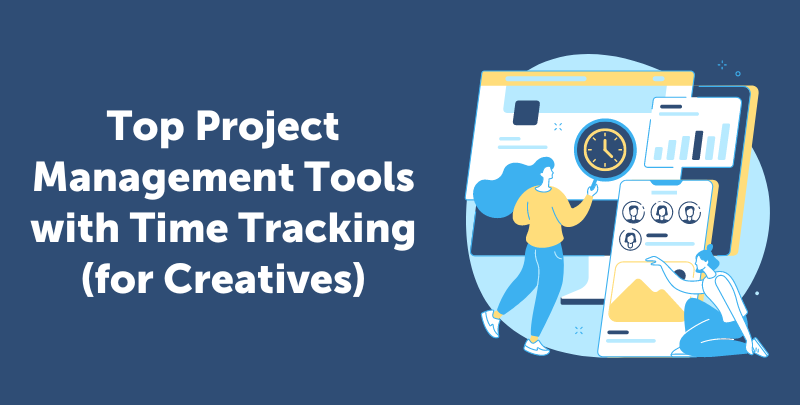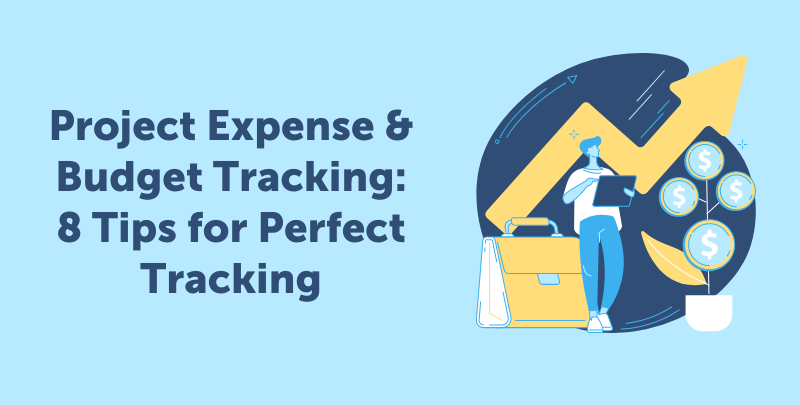Get all our templates, tips, and fresh content so you can run effective, profitable, low-stress projects in your agency or team.
Very small marketing teams and creative agencies may rely on spreadsheets to manage project budgets, monitor ongoing expenses, and report on final costs and profitability.
We’ve seen teams use Microsoft Excel (or, similarly, Google Sheets) because it’s free and has a minimal learning curve — most are already using Microsoft (or Google) business applications and are familiar with how they work.
Despite the benefits of these tools, there are several downsides, and many find that they outgrow manual cost-tracking methods once they’re managing multiple projects and have a full schedule:
- To record costs manually, you must switch between your project management tool, time tracking app, accounting system, and spreadsheet. The time spent gathering details from multiple systems (or having to check in with individuals if they forget to update systems) adds up quickly — and could be spent on more valuable tasks.
- You have to grant everybody reporting on project costs or hours access to the spreadsheet, or one person must manage it, and team members communicate with them. You can imagine how this becomes a hassle.
- There are no real-time updates. Everybody who manages the sheet has to rely on each other to add new costs when they place product-related purchases or spend time on projects. If somebody forgets to update the sheet for a few days, others can’t see accurate numbers or troubleshoot budget issues.
- These systems don’t offer proactive cost controls. You can only record costs as you go (so you only catch unplanned spending after you’ve exceeded budgets).
- Lastly, spreadsheets are prone to human error. It’s not uncommon for users to hit the wrong button as they’re entering data (for example, plugging in five hours instead of six). Then, you’re reporting on inaccurate data and must dig back to pinpoint inaccuracies and correct spreadsheets.
Since we’ve been working with and consulting creative teams for over thirty years, we created this guide to discuss the methods and best practices of using Excel to track project costs.
Our guide includes two parts:
- How to create a cost-tracking template in Excel (or Google Sheets)
- Alternative options for project cost tracking after you outgrow spreadsheets
Creating a Project Cost-Tracking Template in Excel
To streamline this flow, start by creating budget templates you can reuse from project to project.
Depending on the project or billing type, you may use different cost-tracking metrics. Consider the various projects or services you offer and create complementary templates for each project type.
In Excel or Google Sheets, you may:
- Copy your cost-tracking template at the beginning of each new project so you have a dedicated sheet per project.
- Create one sheet with individual tabs per project. You could copy the Excel template in each tab as you would when creating a new sheet.
As mentioned above, we understand there may be slight differences in how teams track costs by project or billing method, but generally, we suggest your cost-tracking template include:
- The expense category
- The actual item or expense — these could be project tasks, services and labor costs, products, or other project-related expenses, like media buys
- The item’s description — this would be a more detailed description of the expense, perhaps details on what it’s used for
- Budgeted gross (i.e., billable amount)
- Budgeted hours
- Budgeted net
- Actual gross
- Actual hours
- Actual net
- Assigned to — this specifies who’s working on the item or which manager is overseeing the task
Your template may look something like this:
![]() You can access our free template here.
You can access our free template here.
Note: To make your own copy of this template, simply go to "File" and select "Make a copy."
During creative project planning — more on those steps in this guide — you should add all planned costs and details to this spreadsheet. This assists in cost estimation, as you can see the required resources and estimated costs for the entire project, which also helps with forecasting revenue and profitability.
It’s also a good idea to list costs in the order you plan tasks and anticipate expenses (i.e., list tasks by project phase) so you can also track project schedules from the spreadsheet. Some teams even take it further, creating corresponding Gantt charts from their spreadsheet lists.
You can update the “Actual” columns in spreadsheets as each project progresses and you realize costs; then, you can track project expenses and progress together.
Alternatives to Tracking Project Costs in Excel
As we explained, spreadsheets are only a viable option for so long, and many teams eventually look for alternative cost-tracking solutions as they experience disorganization and other issues with manual methods.
That’s why many creative project management software brands offer comprehensive feature sets to support all aspects of operations. Not only do they include standard task management, but they also provide budget tracking, time tracking, resource management, and more.
With these tools, you can create a project, outline the expected tasks, resources, and costs, and then track expenses as projects progress in real-time. Everything is managed and trackable at the project level. These systems resolve the issues we outlined above by:
- Centralizing tools and staff so you can manage operations in one system instead of jumping between software or gathering hours from employees.
- Restricting user access so managers can tag charges and project teams can add hours — without editing other metrics.
- Updating metrics in real-time as users add hours and tag project-related charges. Everybody can see current budget usage.
- Sending notifications about projects that risk going over budget so managers can intervene before they exceed planned costs.
- Reducing manual data entry. Managers add items and costs during estimating and then tag project charges from invoices and credit card spending as projects progress. Employees can update budgets by adding hours (tied to employees’ hourly rates) so resource utilization updates are accurate.
Our Solution, Workamajig
Workamajig is a creative project management software for in-house teams and agencies. We work with design studios, marketing teams, advertising agencies, media planners, and more, and we configure each instance of Workamajig to individual client specifications.
Our system supports and streamlines creative workflows so teams can work more efficiently and see greater success and profitability from their projects and initiatives. It includes:
- Customizable project intake forms for in-house teams to manage new requests
- CRM for agencies to manage and convert new leads
- Estimating tools to outline all expected project costs
- Staff scheduling for improved resource allocation
- Task management
- Project monitoring
- Project cost management via budget tracking
- Time tracking
- Collaboration tools like internal proofing
- User (client) portals for others to request projects, track progress, join feedback discussions, and access deliverables
- Accounting software
- Billing and invoicing
- Agency reporting — financial reports, profitability reports, hourly reports, etc.
- Integrations with various business applications to synchronize systems
You can watch a quick demo here:
Every client receives guided onboarding, training, and a dedicated account manager to support migration, consult on processes, and assist as needed.
To see our software in more detail, you can request a free demo of Workamajig.
Runners-Up: Advantage, Clients & Profits, and Productive
In addition to Workamajig, Advantage, Clients & Profits, and Productive are all popular creative project management tools with native cost tracking.
- Advantage is an agency management tool geared towards enterprise organizations and large agencies. It’s especially appealing to media planning teams because it’s merged with Simpli.fi, a top media buying system, to offer media planning and buying in one solution. Advantage combines project management, resource management, accounting, media buying, and more — but pricing is expensive.
- Clients & Profits is another brand with decades of experience with creatives. They offer tailored packages for design studios, ad agencies, and marketing teams and are especially popular for marcoms. The software supports the entire creative project lifecycle, from intake through invoicing and profitability reporting. Like Workamajig and Advantage, Clients & Profits includes a plethora of features and a native accounting suite.
- Productive offers an all-in-one agency management software for in-house teams, design studios, marketing agencies, and other professional industries. This option isn’t as comprehensive as the tools above, as it lacks the full accounting software, but it includes budget tracking and integrates with many popular accounting systems to supplement its core features. Productive’s core features include project management, resource management, and financial management, but it integrates with various business applications to serve as a single source of truth for managing agency operations.
We won’t go into all the details on each of these tools in this post — we wrote a complementary guide on these alternatives, where you can compare features and pricing in-depth.
Continue reading here: Best Creative Project Management Tools with Financial Tracking
Getting Started
Still have questions? Contact our team to schedule a free demo and learn more about the best practices for creative cost tracking.

